The trends shaping the digital beauty industry in 2022
How 2021 shaped the beauty industry…
It’s safe to say that 2021 was a standout year in the beauty industry. From brands like Glossier opening their first permanent store in the UK, to Michelle Obama rocking a newsworthy blow dry.
From new TikTok inspired makeup trends of 2021, to innovative beauty products and new digital marketing trends, our Marketing Manager and digital beauty expert Michelle explores exactly what affected the industry and how brands can capitalise on these trends within their marketing strategy.
So, what made the headlines?
We saw the return of the mullet, as confirmed by Lil Nas X who wowed at the VMAs with his Prince inspired do – but we’re hoping this one stays in 2021!
Adele made her triumphant return which marked not just great new music, but also a desire to achieve that perfect winged eyeliner (advice welcome).
There was an explosion of celebrity owned beauty brands (thank you Harry Styles and co) and some rather unusual nail art… we’re looking at you MGK and Megan Fox!
But it wasn’t just celebs leading the way. Thanks to TikTok, we were introduced to some pretty huge beauty trends, some slightly more questionable than others.
We’re talking 90s inspired makeup, soap brows (racking up a huge 220m views alone) and innovative ways to create faux freckles (some slightly more successful than others).

One trend which was noticeably favoured by consumers was skin minimalism, AKA ‘skinimalism’. This saw the move away from extensive skincare routines to a condensed number of well formulated products.
The result? Glassy skin (#nofilter). And whilst this was great news for shoppers’ bank accounts, it left brands with the challenge of upping their AOV.
So that’s 2021’s big headlines, but what can we expect going forward and how can brands capitalise on this year’s trends?
1. The market for sustainable beauty products continues to grow…
We’re not just talking about reducing plastic and packaging. Increased consumer awareness and messaging around the topic means that brands need to integrate sustainability throughout their entire business, not just on the surface.
Now, we’ve already touched on sustainability’s role within luxury fashion and its shift towards more natural fabrics. But what are we expecting to see in beauty?
Recycling old products is now far more accessible with more companies offering recycling stations in their stores. Boots are leading the way, offering Advantage Card users points as an incentive for dropping off old products.
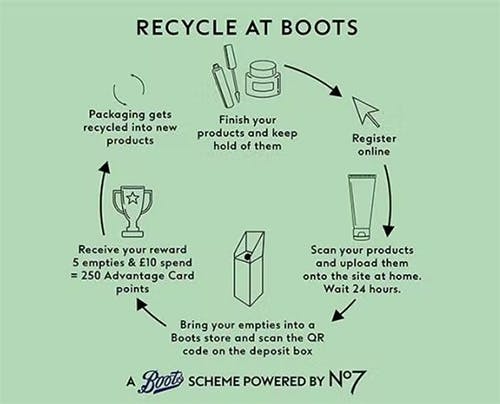
Source: Boots.
Thierry Mugler may have been ahead of the curve with its refillable perfume stations. Popular beauty brands are adopting a similar concept in a bid to reduce their waste, with the likes of Dior, Hermès and Hourglass all launching their own ranges of refillable lipsticks.
Okay, recycling is cool – but what about innovation we hear you cry? Don’t worry, that’s next.
Heard of low water products?
Again, it’s not a brand new concept but how it’s being developed is. We’ve moved on from the early days of Lush’s shampoo bars and are going that step further in the way of new solid skincare products.
Hear us out, because although this may sound a little far fetched, pioneering skincare brand and Reload Digital client SBTRCT have nailed it. In fact, they recently launched the industry’s first solid retinol bar.
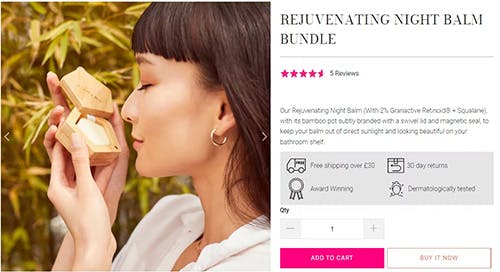
Source: SBTRCT.
Pre and probiotics are no longer just a part of your diet, they’re in your skincare routine too. But what is clear is a boom in microbiome-based products, most notably kombucha.
Not only are these naturally fermented ingredients offering ultra glowy skin, but the ingredients give them a longer shelf life (great news for both manufacturers, customers and the planet).
So, with Google searches for microbiome increasing by 110% year on year, could this indicate a shift towards hyper-personalised skincare?
We asked Marie Drago, founder of Gallinée and current Reload client, how she’d seen the market shift over the past year.
Marie said, “We definitely saw a big increase in interest in everything linked to the microbiome and skin immunity in general.
I think part of it is interest for nutrition naturally moving towards the skin, but also it indicates more interest for a more holistic view of beauty, less centred toward ingredients, and more about what the product does for you.”
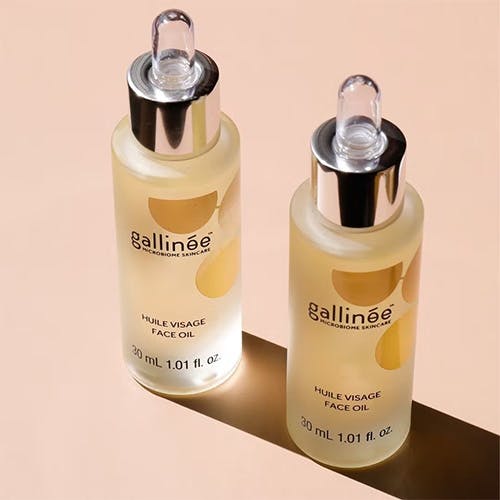
2. E-tailers continue to undercut brands…
Sustainability and innovation aside, one of the big challenges beauty and skincare brands in particular continue to face is the continued growth of e-tailers.
Cult Beauty, Beauty Bay and Look Fantastic… we could go on. But let’s look at this from both sides of the spectrum, starting with customers.
E-tailers offer competitive discounts – undercutting those offered from the brands themselves – single delivery charges, all your favourite brands in one place along with loyalty schemes available across a huge variety of categories.
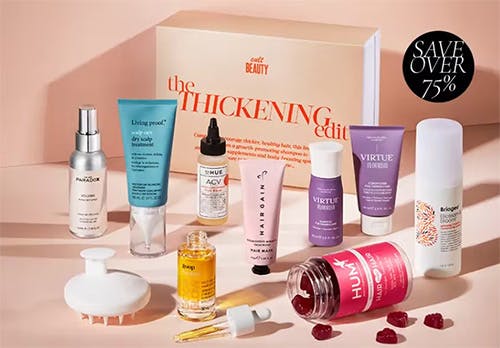
Source: Cult Beauty.
So, it’s easy to see the customer appeal, right?
But turn the page and it’s a whole different story for the brands themselves.
High discounts eat into profit margins, losses in website traffic, an inability to capture accurate consumer data and less opportunity to build brand loyalty.
Why is first party data so important in building strong relationships? Community is set to be an integral part of the beauty industry moving forward, so brands need to tap into their consumers’ habits.
Collecting data such as search terms and spending habits enables brands to understand customer pain points and resolve them. Whether that be by suggesting relevant products they may be interested in, or by curating personalised content and tech services to answer their queries.
Now, don’t get us wrong, we’re not anti-e-tailer. But what this means is that brands need to remain even more competitive by giving customers a reason to visit their websites directly.
Our clients have implemented a range of tactics to make shopping direct more desirable. PRAI Beauty have introduced their own VIP program PRAI Perks where you can earn points for shopping as well as liking them on social channels.
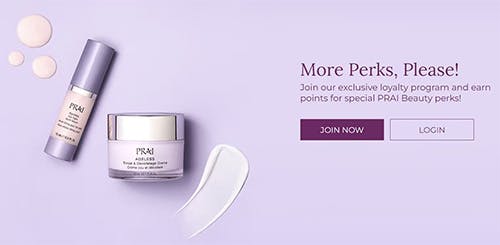
Source: PRAI Beauty.
Beyond loyalty programs there are multiple ways brands can make shopping direct indispensable such as exclusive products, educational content, matching free shipping thresholds or – like PRAI Beauty and Gallinée – offering a free gift with purchase.
Alternatively, 2022 could be the year for brands to introduce a subscription service. Data collected from customers’ product selections enables brands to seek and surprise by including relevant new products and a truly personalised experience.
It’s predicted that by 2025 the subscription box market is set to worth £1.8 billion in the UK. But it isn’t just women seeking out the service.
The growth in male grooming (with sales set to hit $81.2 billion by 2024) has seen major players such as Gillette jump at the opportunity to remain competitive against the likes of Dollar Shave Club.
3. Brands need to establish their positioning…
Brands must decide how to position themselves in their messaging first and foremost. Need a hand on where to start? We cover this in detail in our eBook ‘The Perfect eCommerce Customer Journey’ - go and check it out.
Do you want customers to buy into the brand values? Or do you want to be product led? Let’s explore two brands we work with who have identified their positioning and own this in their own unique way.
Philip Kingsley position themselves as a haircare authority figure. Their focus is on the innovation behind their products using formulas informed by Trichologists.
Their educational hair guide articles feature a wealth of information from hair loss through to hair texture and the science behind it, is the driving force in attracting customers to their website over that of e-tailers. Their website also features a hair quiz that will build you a bespoke haircare routine.
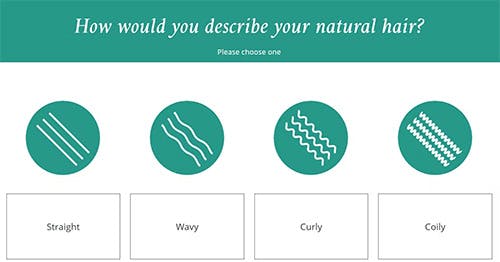
Source: Philip Kingsley.
Follow in the footsteps of Skinny Tan by offering exclusive promotions. How do they do it? By providing a range of product bundles at a competitive price which aren’t available elsewhere, effectively undercutting e-tailers who only supply single products.
A brand value that’s essential in 2022 is inclusion. For years the beauty industry has been criticised for showing a lack of diversity across both models and products. And whilst there is still a lot of work to be done, times are changing.
Over the last couple of years the size of the global colour cosmetic makeup market has grown at double the speed of the conventional market. And it’s thanks to the likes of Fenty, who helped to galvanise this change through showcasing a diverse range of skin tones through their models.
But it isn’t just this that’s helped Fenty evolve into the beauty giant it is today. It’s the representation of all consumers, with campaigns featuring trans and disabled models in a range of shapes and sizes.
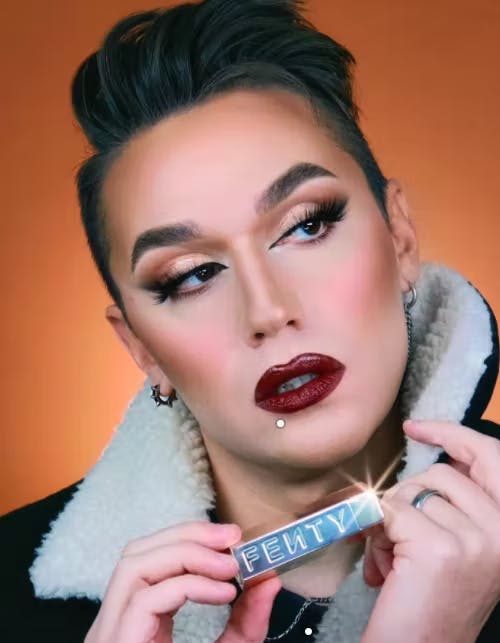
4. Rising advertising costs shows a need to focus on retention…
Over the past two years CPCs and CPMs have been on the rise, resulting in higher CACs for new customers. Could it be time for brands to reduce their reliance on paid platforms and invest their budgets elsewhere?
Organic strategies are now at the forefront of visibility building for those wanting to step away from PPC. The key is to make sure you are valuable, but not just in your product itself.
Let’s talk customer retention, shall we?
Building out an email strategy is a core element, in fact 20-40% of repeat revenue should be coming from email campaigns alone.
The focus here is to make your customers feel rewarded, whether that’s through exclusive loyalty discounts or surprise and delight emails straight into their inbox (no one ever said no to a birthday treat).

Members exclusive offer from Paula's Choice.
In fact, three quarters of customers will favour a brand if they have a loyalty program. Take the Mac Lover Loyalty scheme, a tier based program which sees you move through the levels based on your annual spend.
Once you reach the top tier, you receive complimentary two day shipping and invites to exclusive events (makes you feel pretty special, right?).
5. But customer acquisition doesn’t need to be expensive…
We can also look to social channels when it comes to purchase decision making. The viral impacts of TikTok are here to stay as the digital platform reinvents the power of word of mouth marketing.
But it isn’t just influencers driving new customers to a brand; 82% of people’s buying decisions are guided by the opinions of friends, families and influencers seen on social media.
This provides the perfect opportunity for brands to build affiliate and referral programs to incentivise direct purchasing.
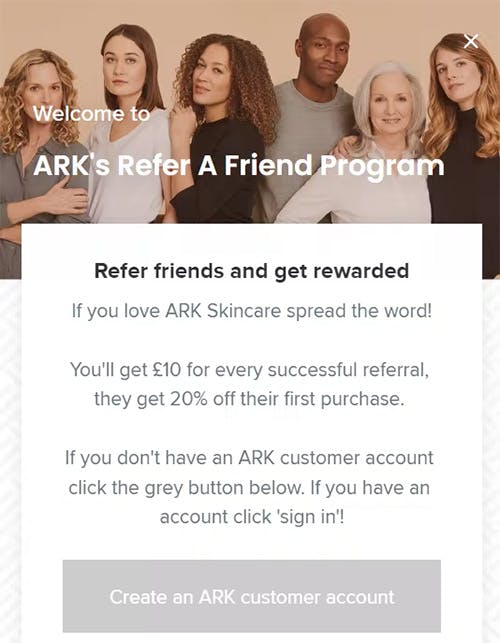
Source: ARK Skincare.
Take Skinny Tan, for example, who since scaling their affiliate marketing efforts have seen a 20% increase in the number of products sold by affiliates. Not forgetting to mention a conversion rate that is over 200% higher than that of their Google Ads.
Impressive! But wait, it gets better. Focussing on the past three months, conversion rate amongst new customers was 7.35% higher than paid search; with affiliates still having the highest conversion rate for returning customers at 3.69% higher than email.
What we’re saying is affiliates really should be considered by brands wanting to both grow and retain their customer base in a cost effective way.
6. Continued saturation of the beauty industry due to low barriers to entry...
Now an estimated worth of $700 billion, the beauty industry continues to grow. Low barriers to entry mean that it is easier for new product innovation to hit our shelves, giving consumers choice paralysis.
Brands need to consider how they can go against the grain in capturing consumer attention. Enter co-branding, a tactic which lands well in the industry thanks to its collector appeal.
Aligning with a brand that allows you to tap into another customer base you otherwise would not be exposed to, and at a much lower cost. And whilst some collaborations may seem a bit out there - they work effectively due to shared brand values.
Remember CoverGirl X Lucasfilm? A 19-piece Star Wars inspired collection designed by the iconic makeup artist Pat McGrath, which enabled Lucasfilm to promote their film beyond their often male dominated audience; with CoverGirl appearing in front of a less makeup-centric demographic.
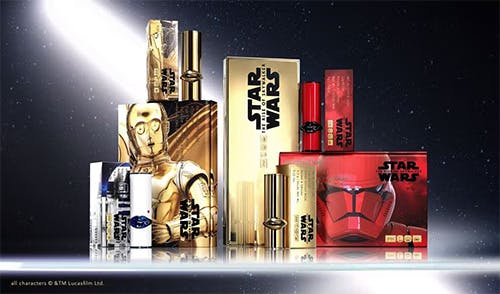
Source: Harper's Bazaar.
But beyond this, it’s time for brands to think about their on-site content to get ahead of their competitors.
First and foremost, it’s about fully understanding your customers and tailoring your website to streamline their user experience. Research what consumers are asking and organise your website in a way that makes it simple to find those solutions (remember that first party data we mentioned?).
What benefits will you see? A positive impact on your conversion rate which will be rewarded with higher revenue.
So, who is doing it well?
Let’s turn our attention to our very own ARK Skincare. They effectively break down their products into age, skin concern and product group, as well as providing educational content to set them apart. Organic is now contributing to new customer acquisition, decreasing the reliance on paid channels.
Off the back of our work on improving their organic visibility for new customers through optimisation of website content, impressions amongst new customers increased 485% and clicks 605% from 2020 to 2021.
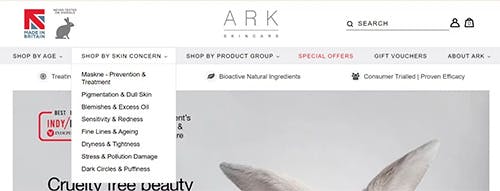
Want to know more about our predicted trends for 2022?
Get in touch!
Speak to one of our experts now and discuss how we can work together to capitalise on what 2022 has in store for your beauty brand.
Want to hear more about our predictions? Check out what we expect from the luxury fashion industry.
Discover more specialist written articles on a whole range of topics here.